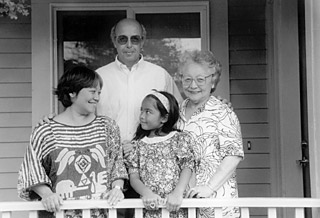I begin this collection with an homage to Marianne Hirsch, without whom these discussions would not be possible. In many ways Marianne’s fingerprints are all over this issue. Many of those involved in this project were introduced to each other through Marianne. Moreover, many of the contributors to this issue were fortunate enough to have spent time together in Hanover, New Hampshire in the spring of 1996 attending and participating in the conference “Family Pictures/Shapes of Memory” (Novak, Leonard, Hirsch, Ost, Levitt), others were also a part of the exhibition “The Familial Gaze,” that was on view at the time of the conference at the Hood Museum of Art at Dartmouth College (Novak, Leonard), an exhibit that Marianne also organized. 1
The papers presented at that conference become the basis of Marianne’s collection, The Familial Gaze, 2 for which I originally wrote this afterword. At the time, I had been asked to review the manuscript for the press and suggested that the book needed a preface or an afterword to really call attention to the major contribution that Hirsch had made in bringing together such a diverse group of scholars and artists on this topic. It was with this in mind that, when asked to write an afterword myself, I wrote the words that follow. As it turned out, the afterword I published is a rather different essay. At the time, Marianne felt that the tone of this piece was too laudatory. She was uncomfortable having the piece included in a volume she had edited. It was embarrassing. Given this, I rewrote my essay.
All these years later, I found myself returning to this original afterword as I began to imagine putting together this special issue. Given the significance of Marianne’s contributions to the study of “the familial gaze,” her ongoing work in bringing together artists and scholars, and even, in this case, introducing me to Muriel Hasbun’s remarkable work, I wanted to acknowledge publicly my own and a collective indebtedness to Marianne and her insistence on the significance of family photographs.
Although Jewishness was not a major theme of The Familial Gaze or the conference, it was my noticing the extraordinary presence of Jewish scholars and artists at that conference that, in many ways, led to this collaborative project. After reading the afterword that was published, Joanne Leonard first contacted me about beginning to think about the Jewishness of her work. So, when Janet Jakobsen invited me to put together a panel for the Rennert Women in Judaism Forum on the subject of American Jews and family photography, I was able to return to this topic and continue think through the issue of Jewishness with Marianne, Lorie and Joanne.
What follows is for Marianne Hirsch; it has needed to be said publicly for quite some time. Philadelphia, January 2002
- Also to be included here is the work of photographer Larry Sultan. I wrote about the less overt Jewishness of that work in Laura Levitt, “Photographing American Jews: Identifying American Jewish Life,” in Laurence Silberstein, ed. Mapping Jewish Identities, (New York: New York University Press, 2000), 65-96.[↑]
- Marianne Hirsch, ed., The Familial Gaze, (Hanover: University Press of New England, 1999).[↑]



